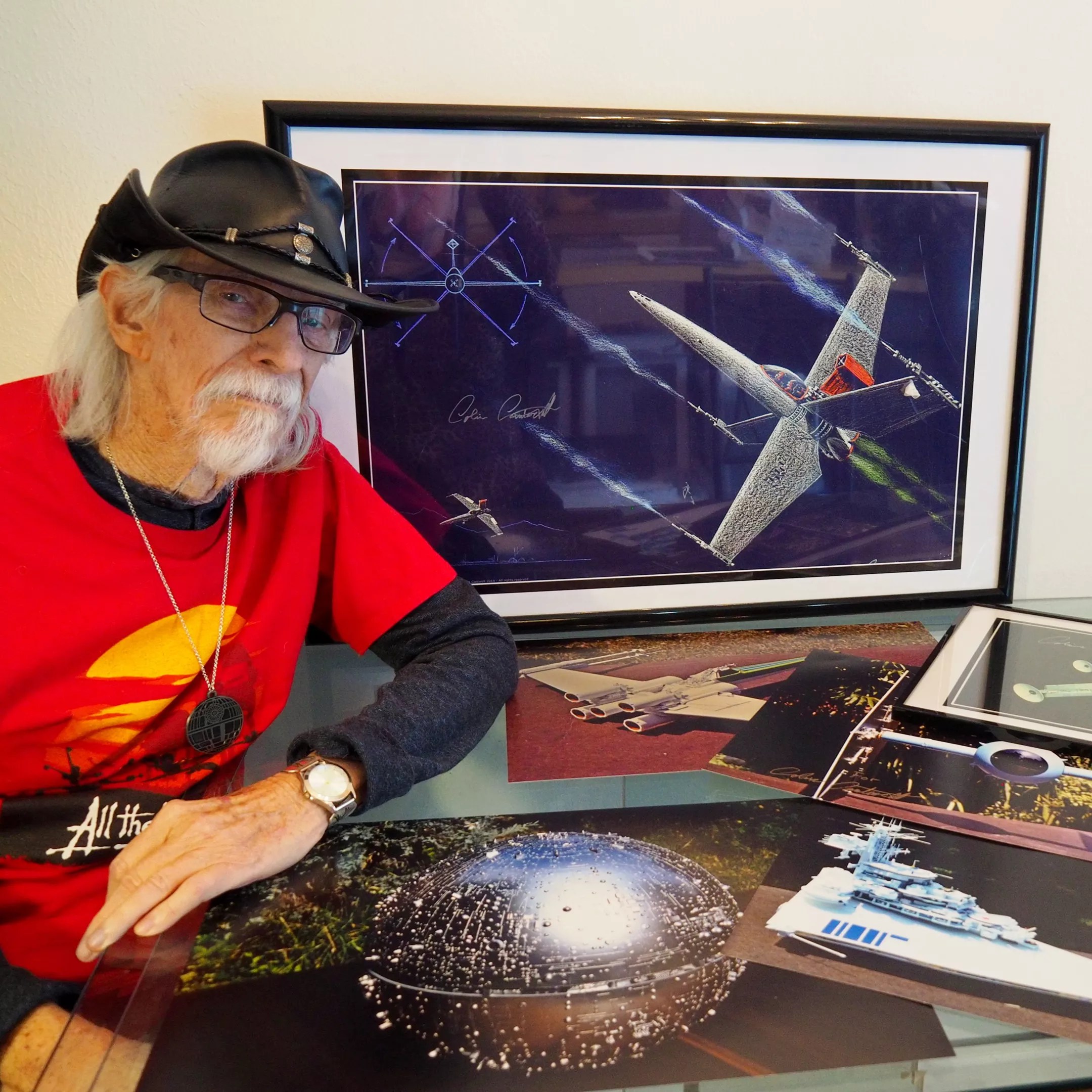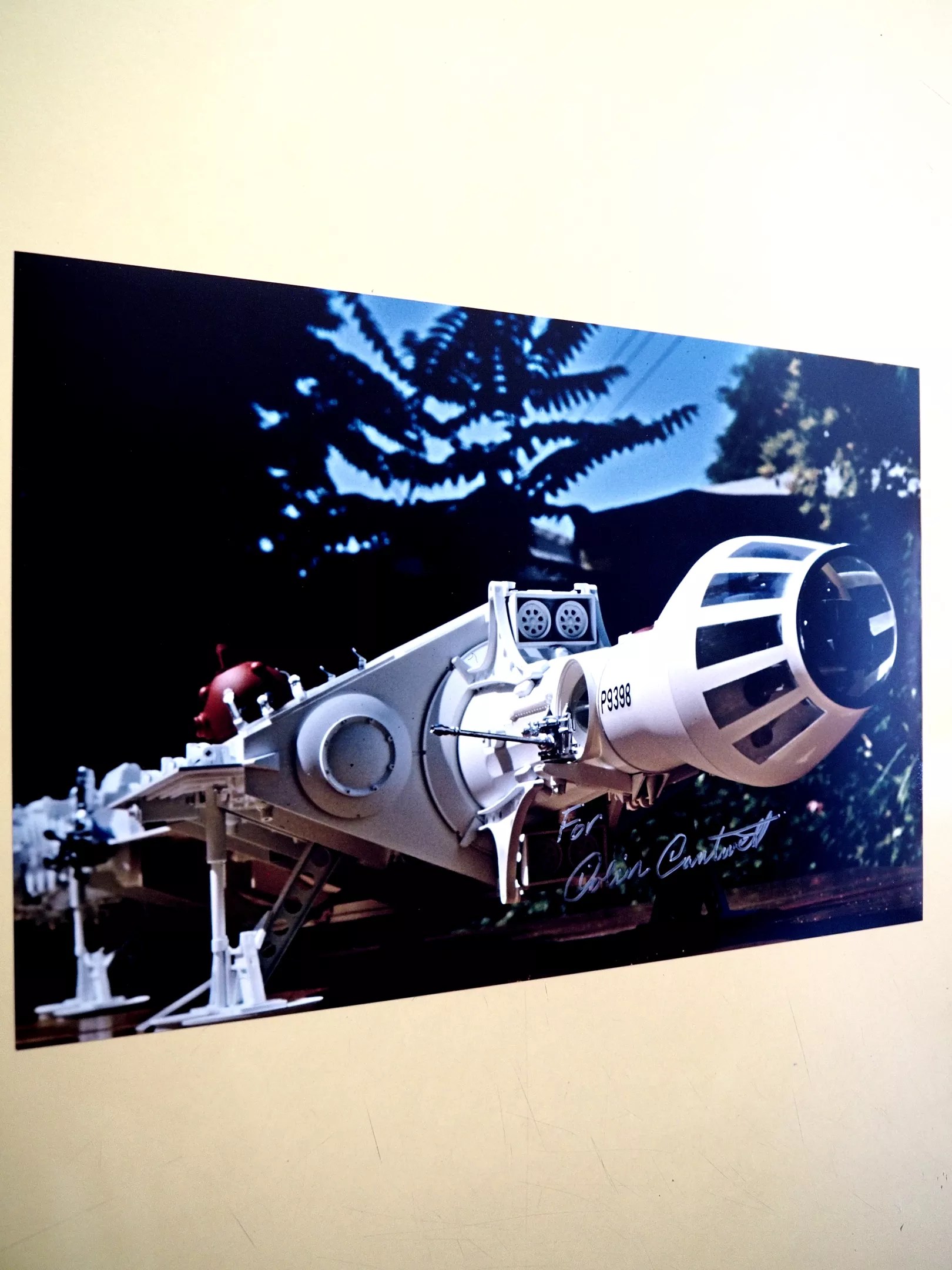
Colin Cantwell

Audio By Carbonatix
If the idea of Star Wars‘ cosmic dogfights fills you with nostalgic glee, then you have Colin Cantwell to thank. He was the original designer of all of the ships in the first Star Wars film, A New Hope. The X-Wings and Y-Wings, the TIE Fighters, the Star Destroyers, the Death Star, and the fabled Millennium Falcon all came from his imagination. And Cantwell didn’t stop with Star Wars; he also worked on 2001: A Space Odyssey, Close Encounters of the Third Kind, Buck Rogers in the 25th Century, and more. For any of us who were thrilled by space battles in the 1970s, we owe Cantwell a tip of the flight helmet.
We caught up with Cantwell, now a Boulder resident, on the occasion of his May 4 appearance at Vision Comics and Oddities, 3958 South Federal Boulevard, in Sheridan.
Westword: You’re appearing at Vision Comics and Oddities this Saturday, in honor of the celebratory convergence of both Free Comic Book Day and Star Wars Day (May the Fourth). What do you have planned for the fans who come to join the party?
Colin Cantwell: I’ve created a series of short videos that will run throughout the time I’ll be there. The videos describe the beginning of the ship concepts as well as the making of the models for the first Star Wars movie, A New Hope. I’ll also be available to autograph items that people bring in. If someone doesn’t have an item for me to sign, and they pay for an autograph, then I’ll give them a free print of my concept drawings or a photo that I took of the ship models.
You’ve done work for a number of space and tech-related pop-culture classics – not just the original Star Wars, but also 2001: A Space Odyssey, Close Encounters of the Third Kind, right up to WarGames and more. How did you first get into such a specific artistic focus? Were you always fascinated by outer space?
I’ve had a thirst for knowledge and a surprisingly mature interest in space since I was quite young. I read the entire grade school library through the sixth grade by the middle of my first year in school.
So how did you land the gig for the original Star Wars back in the mid-’70s?
I already had a reputation for working with Kubrick on 2001: A Space Odyssey, and being the “Hal 9000 Computer” that gave Walter Cronkite the data he needed to broadcast the Apollo 11 moon landing on live TV. My friend Hal Barwood was working with George Lucas on American Graffiti. Hal knew I had designed a revolutionary new way of making models for movies, so he introduced me to George. George took a look at my kit-bashed models and decided to hire me.
Since it’s almost Star Wars Day, we should ask about some of your classic creations from that film. The biggest fan favorite has to be the Millennium Falcon. How did the design of that ship begin, and how did it change over the course of the planning?
The Millennium Falcon was originally quite different. The design was much like that of a lizard. However, another film, Space 1999, had created a similar design. So my model was scrapped and the new Millennium Falcon took shape. The only part that was salvaged was the cockpit.

The original concept for the Millennium Falcon, with the famous cockpit that was the only consistent element.
Colin Cantwell
What was the inspiration for the X-wings and their characteristic foils? There’s clearly some dragster influence there (which George Lucas must have appreciated), but what else was in the mix?
I spent three days and nights trying to come up with a totally unique design for this extraordinary film. Each ship had to have its unique characteristics. The X-wing needed “good guy” features. So I thought of a cowboy drawing its guns to fire. Also, the concept of people throwing darts in an English pub helped inspire this design.
And what about the TIE Fighters? Wouldn’t the pilot’s view be blocked by the huge panels, cool as they were? Or were the visuals the most important part?
The TIE Fighter had to be a mystery. It was a mystery where it came from, how the pilots entered the ship, how it landed and took off. The original design actually had the pilot farther out in front of the ship, which would have solved the vision issue. However, I later modified it to the current design.
You also designed the Star Destroyers. Was it more fun to design the capital ships? What was the biggest challenge there?
Each ship had to have a personality to fit its specific role in the film. Each had to have unique characteristics. I enjoyed designing all of them. My question to George Lucas on the Imperial Star Destroyer was “How big should it be? Was it bigger than Burbank?” So the ominous size played an important role in the impression this ship left on the film audience.
And then there’s the granddaddy of them all: the Death Star. How did that concept start? Was the comparison to a small moon already in the script, or was that line a result of your designs?
There was the mention of the Death Star in the script, but the design was left up to me. The Death Star had to be large and threatening.
I’ve read that the infamous Death Star trench was actually a result of a modeling error?
Yes, a flaw in the materials used to create the model resulted in the trench and the fight scenes. After I’d designed the original concept art, I was hired by George Lucas to build the models. For the Death Star, I ordered a styrene globe. It arrived in two halves, and I began scribing the individual hemispheres to create a villainous effect for the movie. After I’d done most of the work, I tried to connect the two halves together – and discovered that the equator of the plastic had shrunk around the edges. It would’ve been nearly impossible to connect the halves so that stage lighting would not show this flaw. So I thought about a solution and contacted George for approval: have a trench in the Death Star where the opposing sides would be shooting at each other in dramatic fight scenes. The result would be sending a missile into a tiny hole in the Death Star. George said “yes” to the changes, and the iconic Death Star fight scene was born.
You’re a Colorado resident these days; how does life in Boulder differ from your early years working with Hollywood?
Hollywood was very exciting at the time, but at this stage in my life, I enjoy coming to the saner world in Boulder. We have been doing extensive traveling for the past few years. Boulder is a nice town to which to come home.
How does it feel to see kids still lining up to see Star Wars movies and wearing the shirts and playing with the toys, all modeled on designs that you brought to the world?
It is very satisfying to see my designs still living today. I didn’t realize how many lives and careers I had influenced until we started going to Comic Cons and other events. It’s been very rewarding.
Colin Cantwell is the special guest at Vision Comics and Oddities, 3958 South Federal Boulevard, in Englewood, from 10 a.m. to 3 p.m. on Saturday, May 4.